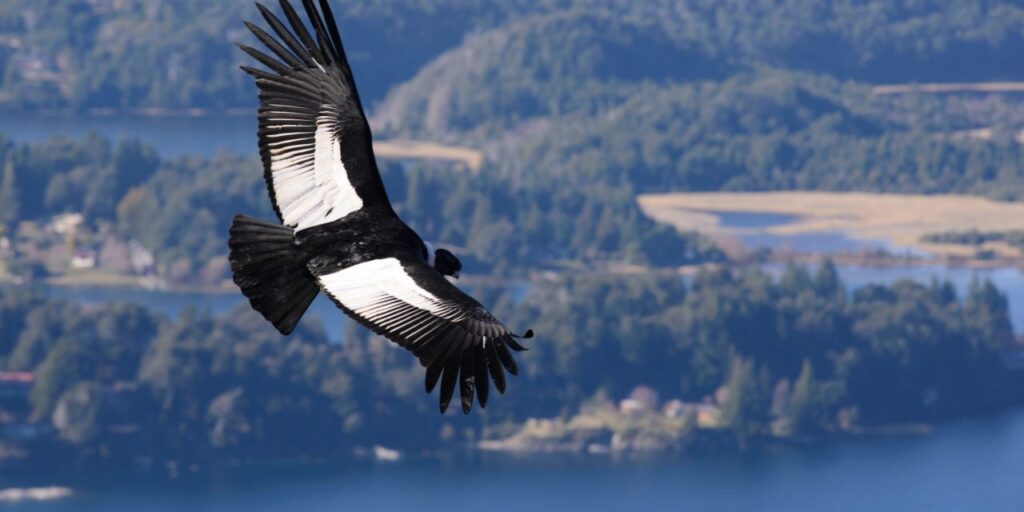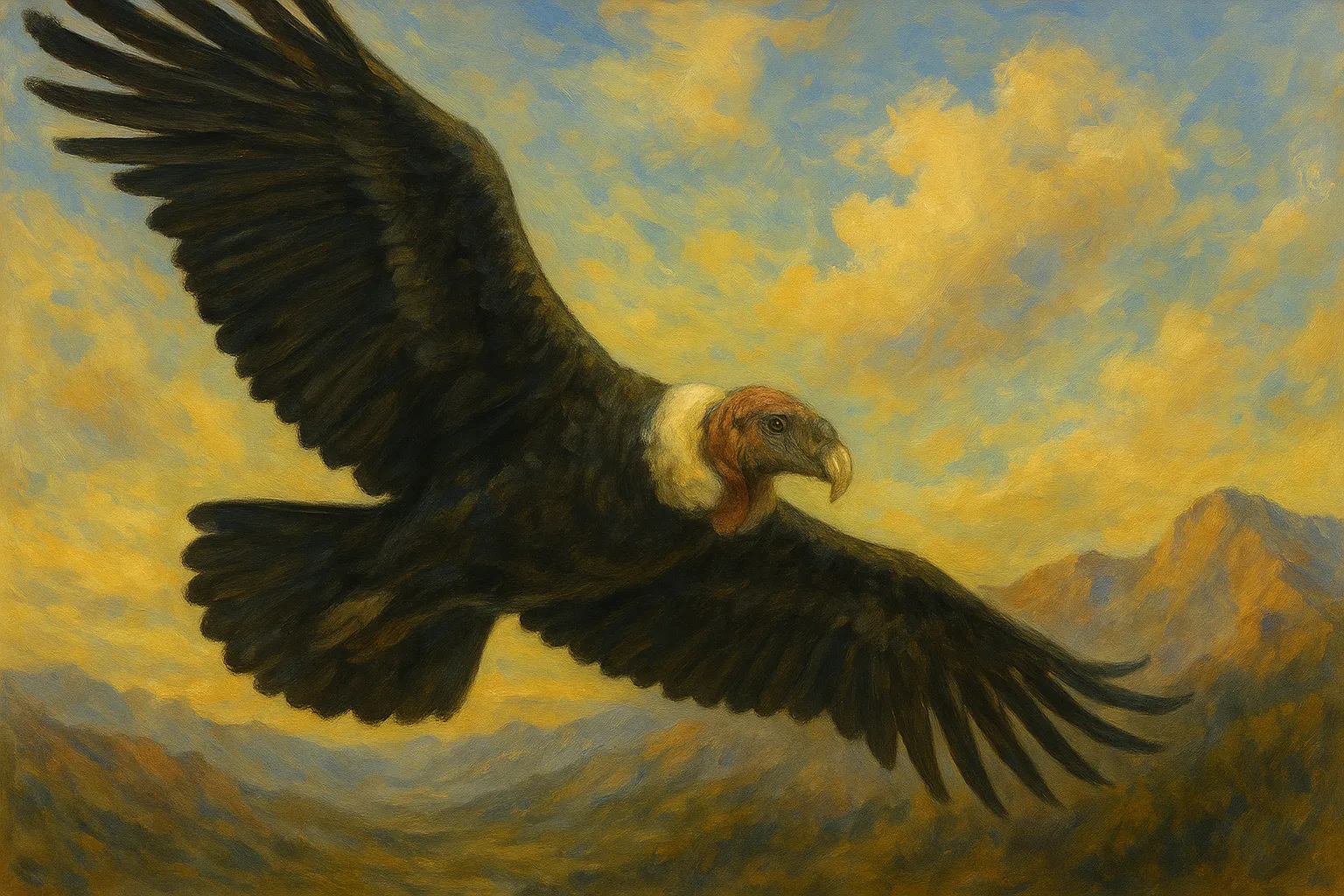Why the Condor Matters Today: Healing and Renewal in Modern Times
In our current era of unprecedented global transformation, the Colombian condor symbolic meaning offers essential guidance for navigating the complex challenges facing humanity. The ancient wisdom embedded within condor symbolism transcends cultural boundaries while maintaining deep roots in Colombian indigenous traditions, providing practical teachings for modern seekers who recognize that our current crises require both technological innovation and spiritual wisdom to resolve.
The spiritual animals of colombia hold particular significance in our contemporary moment, as humanity grapples with interconnected challenges of environmental destruction, social inequality, and spiritual disconnection. Among these sacred beings, the condor emerges as a master teacher whose lessons about perspective, patience, and renewal offer hope for creating positive change in our world. The condor meaning in indigenous traditions provides a framework for understanding how ancient wisdom can inform modern solutions to seemingly intractable problems.
As we face what many spiritual teachers recognize as a pivotal moment in human evolution, the condor’s teachings about condor symbolism freedom and collective responsibility become increasingly relevant. The bird’s ability to soar above immediate circumstances while maintaining awareness of the larger landscape offers a model for the type of elevated consciousness that our world desperately needs. The condor spiritual meaning colombia encompasses both personal transformation and collective healing, recognizing that individual awakening and social change are inseparable aspects of the same evolutionary process.
Learning to “soar without struggle” is not just metaphorical. In traditional yagé ceremonies, this teaching is embodied through guided practices — something we explore deeply in our Camino al Sol retreats.

Lessons from Flight: Patience, Timing, and Effortless Movement
The condor’s extraordinary flight capabilities offer profound teachings about how to navigate life’s challenges with grace, efficiency, and wisdom. These lessons prove particularly relevant for modern individuals who often struggle with impatience, poor timing, and the exhausting effort that comes from working against natural forces rather than aligning with them.
The Art of Soaring Without Struggle
The condor’s ability to soar for hours without flapping its wings demonstrates the power of working with natural forces rather than relying solely on personal effort and determination. This teaching challenges the modern tendency to approach problems through force and struggle, suggesting instead that sustainable solutions emerge when we learn to align with the underlying currents that govern all existence.
In practical terms, this means learning to recognize the natural rhythms and cycles that influence our personal and professional lives. Just as condors wait for thermal currents to develop before beginning their flights, we can learn to identify optimal timing for important decisions and actions. This might involve waiting for the right moment to launch a new project, make a career change, or address a difficult relationship issue.
The condor’s soaring technique also teaches us about the importance of gaining altitude before attempting to cover long distances. In life, this translates to developing spiritual perspective and emotional stability before tackling major challenges or pursuing ambitious goals. By first establishing a solid foundation of inner peace and clarity, we can navigate difficulties with much less effort and stress.
This approach requires developing what indigenous teachers call “condor patience” – the ability to wait for optimal conditions rather than forcing premature action. In our instant-gratification culture, this patience represents a radical shift toward sustainable approaches to achievement and success that honor natural timing and organic development.
Reading the Currents of Change
Condors possess extraordinary sensitivity to atmospheric conditions that allow them to detect and utilize thermal currents that are invisible to other creatures. This ability serves as a metaphor for developing the sensitivity needed to perceive and work with the subtle energies and trends that influence our lives and communities.
In the modern context, this might involve learning to sense the emotional and energetic dynamics within relationships, organizations, or social movements. By developing this sensitivity, we can position ourselves to take advantage of positive trends while avoiding or mitigating negative influences that might otherwise derail our progress.
The condor’s ability to read atmospheric conditions also teaches us about the importance of staying attuned to larger patterns and cycles that operate beyond our immediate awareness. This might include economic cycles, social trends, or spiritual movements that create opportunities for positive change when we learn to recognize and align with them.
This sensitivity requires cultivating what spiritual traditions call “subtle perception” – the ability to perceive information through intuitive channels rather than relying solely on logical analysis. Regular meditation, time in nature, and other spiritual practices help develop this capacity while also maintaining the grounding needed to apply intuitive insights in practical ways.
Timing and Strategic Patience
The condor’s approach to timing offers crucial guidance for modern decision-making in both personal and professional contexts. Rather than rushing into action based on immediate impulses or external pressures, condors demonstrate the wisdom of waiting for optimal conditions before committing energy to major endeavors.
This strategic patience proves particularly valuable in our fast-paced world where the pressure to act quickly often leads to poor decisions and wasted resources. By adopting condor timing, we can learn to distinguish between genuine opportunities and mere distractions, focusing our energy on actions that will produce lasting positive results.
The condor’s timing also teaches us about the importance of preparation and readiness. Before taking flight, condors carefully assess wind conditions, weather patterns, and potential destinations. Similarly, we can learn to thoroughly prepare for important undertakings while remaining flexible enough to adjust our plans based on changing circumstances.
This approach requires developing trust in natural timing and the wisdom to recognize when conditions are truly optimal for action. It also involves learning to use waiting periods productively, gathering information, building skills, and strengthening relationships that will support our eventual success.
For those seeking to understand the broader spiritual context of condor teachings, explore our comprehensive guide to Andean Condor spiritual symbolism.
Freedom with Responsibility: The Condor’s Balanced Approach
The condor symbolism freedom encompasses a sophisticated understanding of liberty that balances personal autonomy with collective responsibility. This balanced approach offers essential guidance for modern individuals who seek authentic freedom while recognizing their interconnectedness with all life and their obligations to future generations.
True Freedom vs. Mere Liberation
The condor’s freedom differs fundamentally from the superficial liberation that characterizes much of modern culture. While contemporary society often equates freedom with the absence of constraints or the ability to pursue immediate desires without consequence, condor freedom involves the wisdom to choose actions that serve both individual fulfillment and collective well-being.
This mature understanding of freedom requires developing the perspective needed to see beyond immediate circumstances and personal preferences to perceive the larger patterns and relationships that connect all existence. From this elevated viewpoint, true freedom emerges not from escaping responsibility but from embracing our role as conscious participants in the cosmic order.
The condor’s freedom also involves the ability to move between different realms of existence – soaring in the heights of spiritual awareness while remaining grounded in practical reality. This capacity for navigating multiple dimensions of experience allows for a more complete and integrated approach to living that honors both spiritual aspirations and earthly responsibilities.
In practical terms, this might involve making career choices that provide both personal satisfaction and meaningful contribution to society, or developing relationships that support individual growth while also serving the greater good. The key lies in recognizing that authentic freedom emerges from alignment with our highest values and deepest purpose rather than from the mere absence of external constraints.
Collective Responsibility and Cosmic Citizenship
The condor’s role as a messenger between earthly and celestial realms reflects a deep understanding of cosmic citizenship – the recognition that our individual actions affect the entire web of existence and that we bear responsibility for the welfare of all beings. This perspective challenges the individualistic orientation that characterizes much of modern culture while offering a more sustainable and fulfilling approach to living.
Cosmic citizenship involves recognizing that our personal healing and spiritual development serve not only our own interests but also contribute to the healing and evolution of the entire planet. From this perspective, practices such as meditation, therapy, and spiritual study become forms of service that benefit all beings rather than merely personal indulgences.
This understanding also extends to our relationship with the natural world, recognizing that environmental protection and species conservation represent essential aspects of our cosmic responsibilities. The condor’s current endangered status serves as a powerful reminder of the consequences that result when human communities lose sight of their obligations to other species and future generations.
The practice of cosmic citizenship requires developing what indigenous traditions call “seven-generation thinking” – the ability to consider the long-term consequences of our actions on future generations. This perspective helps guide decision-making in all areas of life, from personal choices about consumption and lifestyle to professional decisions about career and business practices.
Sovereignty and Service Integration
The condor’s teaching about sovereignty involves understanding that true personal power emerges from service to something greater than ourselves rather than from domination or control over others. This integration of sovereignty and service offers a mature model for leadership and influence that serves both individual empowerment and collective well-being.
Personal sovereignty involves taking full responsibility for our own thoughts, emotions, and actions while refusing to allow external circumstances or other people’s opinions to determine our inner state or life direction. This requires developing strong boundaries, clear values, and the courage to live authentically according to our deepest convictions.
However, condor sovereignty never operates in isolation from service to the greater good. The bird’s role as a spiritual messenger and ecological keystone species demonstrates how individual power can be channeled in ways that benefit entire communities and ecosystems. This integration prevents sovereignty from degenerating into selfishness or narcissism while ensuring that service remains empowered rather than codependent.
In practical application, this might involve developing professional skills and expertise that serve both personal fulfillment and community needs, or cultivating spiritual practices that enhance both individual well-being and our capacity to help others. The key lies in finding ways to express our unique gifts and talents in service of causes and communities that align with our values and vision.
To learn more about the prophetic dimensions of condor teachings, read our article on the Eagle and Condor Prophecy.
Integration Practices: Bringing Condor Wisdom into Daily Life
The practical application of condor spiritual meaning colombia requires developing specific practices and approaches that help integrate condor consciousness into the routines and challenges of modern life. These practices bridge the gap between ancient wisdom and contemporary needs while honoring both the depth of traditional teachings and the realities of current circumstances.
Meditation and Contemplative Practices
Condor meditation practices focus on developing the expanded awareness and elevated perspective that characterize condor consciousness. These practices typically involve visualization techniques that help practitioners experience the sensation of soaring above their immediate circumstances while maintaining awareness of the larger patterns and connections that influence their lives.
One effective practice involves sitting quietly and imagining oneself rising to great heights, similar to a condor catching thermal currents. From this elevated vantage point, practitioners can observe their life situations, relationships, and challenges from a broader perspective that reveals patterns and possibilities that remain invisible from ground level.
Another powerful technique involves contemplating the condor’s role as a messenger between realms, using this imagery to facilitate communication with spiritual guides, deceased loved ones, or higher aspects of consciousness. This practice can provide guidance for difficult decisions while also strengthening connection to spiritual resources and support.
Regular practice of condor meditation helps develop the patience, perspective, and timing that characterize condor consciousness while also providing practical tools for navigating stress, conflict, and uncertainty. These practices work best when combined with time spent in nature, particularly in elevated locations that naturally facilitate the type of expanded awareness that condors embody.
Nature Connection and Outdoor Practices
Spending time in natural environments, especially mountainous regions where condors traditionally soar, provides essential support for integrating condor teachings into daily life. These practices help maintain connection to the natural rhythms and cycles that govern all existence while also providing opportunities to observe and learn from the qualities that condors embody.
Hiking in high-altitude environments naturally facilitates the type of perspective shift that characterizes condor consciousness, allowing practitioners to literally gain elevation while also experiencing the expanded awareness that comes from viewing familiar landscapes from new vantage points. These experiences help develop the ability to shift perspective in other areas of life when facing challenges or making important decisions.
Bird watching, particularly observation of large raptors and soaring birds, provides opportunities to study the qualities of patience, timing, and effortless movement that characterize condor consciousness. Even in areas where condors are not present, watching eagles, hawks, or vultures can help practitioners understand and embody the principles that condor teachings represent.
Outdoor practices might also include creating sacred space in natural settings for prayer, meditation, or ceremony that honors condor energy and requests guidance from condor consciousness. These practices help maintain ongoing relationship with condor wisdom while also demonstrating respect for the natural world and indigenous traditions.
Service and Contribution Practices
Perhaps the most important aspect of integrating condor wisdom involves finding ways to contribute one’s unique gifts and talents to the healing and transformation of the world. Condor consciousness consistently emphasizes the importance of using expanded awareness and spiritual insights in service of the greater good rather than merely for personal benefit.
This service orientation might manifest as environmental activism that protects condor habitat and supports conservation efforts, social justice work that addresses inequality and oppression, or artistic expression that shares condor wisdom with broader audiences. The key lies in finding forms of service that align with one’s natural talents and interests while also contributing to positive change.
Educational activities that share condor teachings and indigenous wisdom represent another important form of service, helping to preserve and transmit traditional knowledge while also making it accessible to contemporary audiences. This might involve writing, teaching, speaking, or creating media that honors indigenous traditions while also demonstrating their relevance to modern challenges.
The practice of service also includes supporting indigenous communities and organizations that work to preserve condor populations and traditional knowledge. This might involve financial donations, volunteer work, or advocacy efforts that help protect indigenous rights and territories while also supporting conservation initiatives.
For those interested in the ceremonial aspects of condor spirituality, explore our guide to Condor in Yagé traditions.
Condor Medicine for Modern Challenges
The application of condor spiritual meaning colombia to contemporary global challenges offers hope for developing solutions that address both symptoms and root causes of our current crises. Condor medicine provides a framework for approaching complex problems with the patience, perspective, and wisdom needed to create lasting positive change.
Environmental Crisis and Climate Change
The condor’s role as an indicator species makes its conservation status a powerful symbol of broader environmental health and the urgent need for sustainable approaches to human development. The bird’s decline reflects the same patterns of habitat destruction, pollution, and climate change that threaten countless other species and ecosystems worldwide.
Condor wisdom suggests that addressing environmental challenges requires the same qualities that characterize the bird’s approach to flight – patience for long-term solutions, sensitivity to natural cycles and patterns, and the ability to work with rather than against natural forces. This perspective challenges approaches that rely primarily on technological fixes while ignoring the spiritual and cultural dimensions of environmental problems.
The condor’s teaching about perspective proves particularly relevant to climate change, which requires the ability to think in terms of decades and centuries rather than immediate political or economic cycles. By developing “condor vision,” we can better understand the long-term consequences of current policies and practices while also identifying opportunities for positive change that might not be apparent from short-term perspectives.
The integration of scientific knowledge with indigenous wisdom that characterizes effective condor conservation also provides a model for addressing climate change through approaches that honor both technological innovation and traditional ecological knowledge. This integration recognizes that sustainable solutions must address not only technical challenges but also the spiritual and cultural factors that influence human behavior.
Social Justice and Inequality
The condor’s role as a messenger between different realms offers guidance for addressing social justice issues that require bridging divides between different communities, perspectives, and experiences. The bird’s ability to soar above immediate circumstances while remaining connected to earthly realities provides a model for maintaining both idealism and pragmatism in social change work.
Condor patience proves essential for social justice efforts that require sustained commitment over long periods of time, often in the face of setbacks and resistance. The bird’s teaching about timing also helps activists and organizers recognize when conditions are optimal for particular strategies or actions, avoiding the burnout that often results from premature or poorly timed efforts.
The condor’s emphasis on collective responsibility challenges individualistic approaches to social problems while also recognizing the importance of personal transformation as a foundation for social change. This perspective suggests that effective social justice work must address both systemic issues and the spiritual and psychological factors that perpetuate inequality and oppression.
The condor’s role as a sacred being in indigenous traditions also highlights the importance of centering indigenous voices and perspectives in social justice efforts, recognizing that indigenous communities have maintained sustainable and equitable social systems for millennia despite centuries of colonization and oppression.
Mental Health and Spiritual Crisis
The widespread mental health challenges facing modern society reflect what many spiritual teachers recognize as a crisis of meaning and connection that requires both therapeutic intervention and spiritual healing. Condor wisdom offers valuable perspectives for addressing these challenges through approaches that honor both psychological and spiritual dimensions of human experience.
The condor’s teaching about perspective proves particularly relevant for individuals struggling with depression, anxiety, or trauma, as these conditions often involve becoming trapped in limited viewpoints that prevent recognition of possibilities for healing and growth. By learning to access “condor vision,” individuals can develop the ability to see beyond immediate circumstances to perceive larger patterns and possibilities.
The condor’s emphasis on patience and timing also provides guidance for healing processes that cannot be rushed or forced but must unfold according to natural rhythms and cycles. This perspective challenges approaches that seek quick fixes while supporting sustainable healing that addresses root causes rather than merely managing symptoms.
The condor’s role as a bridge between different realms offers hope for individuals who feel disconnected from meaning and purpose, providing a framework for understanding how personal healing contributes to collective transformation while also connecting individual experience to larger spiritual realities.
To understand the conservation context that motivates much condor-inspired healing work, read our comprehensive guide to Condor Conservation in Colombia.
Frequently Asked Questions
Conclusion
The condor spiritual meaning colombia offers profound guidance for navigating our current era of unprecedented global transformation. As we face interconnected challenges that require both technological innovation and spiritual wisdom, the condor’s teachings about perspective, patience, and renewal provide essential tools for creating positive change in our world.
The condor’s message transcends cultural boundaries while maintaining deep roots in Colombian indigenous traditions, offering universal principles that can be applied to personal healing, relationship building, environmental protection, and social transformation. By learning to embody condor consciousness, we can contribute to the type of elevated awareness and wise action that our world desperately needs.
The integration of condor wisdom into modern life requires ongoing commitment to practices that develop perspective, patience, and service while also maintaining connection to the natural world and indigenous traditions that preserve this ancient knowledge. Through this integration, we can help fulfill the condor’s role as a bridge between different realms of existence, facilitating the healing and transformation that benefits all beings.
For those called to explore these teachings more deeply, Colombia offers unique opportunities to experience condor wisdom within its original cultural and geographical context. Whether through authentic ayahuasca retreats that honor condor consciousness or deeper study of indigenous spiritual traditions, the path of condor wisdom invites us to embrace both the freedom and responsibility that characterize mature spiritual development.
The condor soars above us still, patient and eternal, offering its teachings to all who are ready to receive them. In our willingness to learn from this magnificent teacher, we find hope for creating a world that honors both individual fulfillment and collective well-being, both technological capability and spiritual wisdom, both human aspirations and the sacred dimensions of existence that connect us all.







